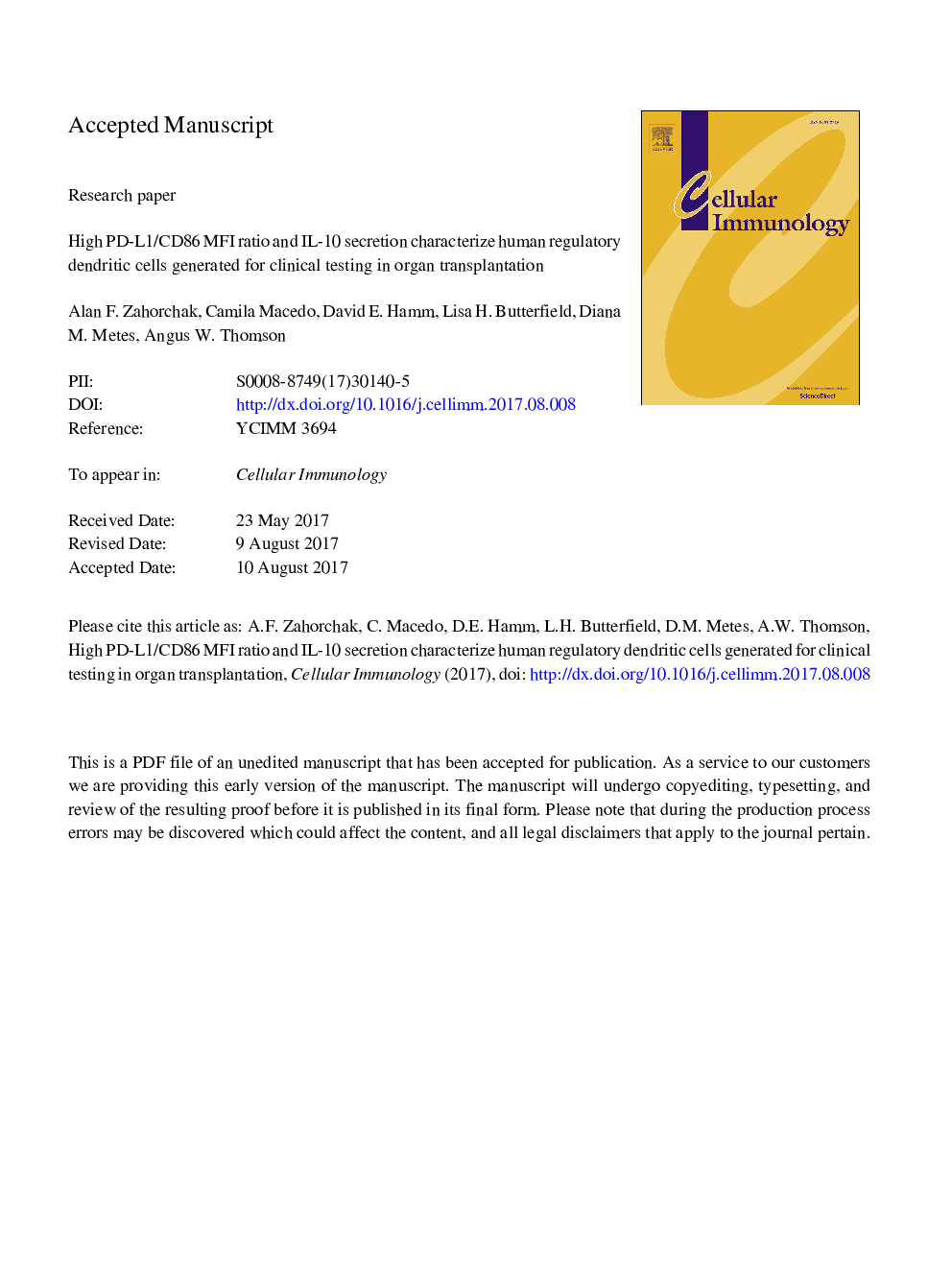| Article ID | Journal | Published Year | Pages | File Type |
|---|---|---|---|---|
| 8463602 | Cellular Immunology | 2018 | 32 Pages |
Abstract
Human regulatory dendritic cells (DCreg) were generated from CD14 immunobead-purified or elutriated monocytes in the presence of vitamin D3 and IL-10. They exhibited similar, low levels of costimulatory CD80 and CD86, but comparatively high levels of co-inhibitory programed death ligand-1 (PD-L1) and IL-10 production compared to control immature DC (iDC). Following Toll-like receptor 4 ligation, unlike control iDC, DCreg resisted phenotypic and functional maturation and further upregulated PD-L1:CD86 expression. Whereas LPS-stimulated control iDC (mature DC; matDC) secreted pro-inflammatory tumor necrosis factor but no IL-10, the converse was observed for LPS-stimulated DCreg. DCreg weakly stimulated naïve and memory allogeneic CD4+ and CD8+ T cell proliferation and IFNγ, IL-17A and perforin/granzyme B production in MLR. Their stimulatory function was enhanced however, by blocking PD-1 ligation. High-throughput T cell receptor (TCR) sequencing revealed that, among circulating T cell subsets, memory CD8+ T cells contained the most alloreactive TCR clonotypes and that, while matDC expanded these alloreactive memory CD8 TCR clonotypes, DCreg induced more attenuated responses. These findings demonstrate the feasibility of generating highly-purified GMP-grade DCreg for systemic infusion, their influence on the alloreactive T cell response, and a key mechanistic role of the PD1 pathway.
Keywords
Related Topics
Life Sciences
Biochemistry, Genetics and Molecular Biology
Cell Biology
Authors
Alan F. Zahorchak, Camila Macedo, David E. Hamm, Lisa H. Butterfield, Diana M. Metes, Angus W. Thomson,
